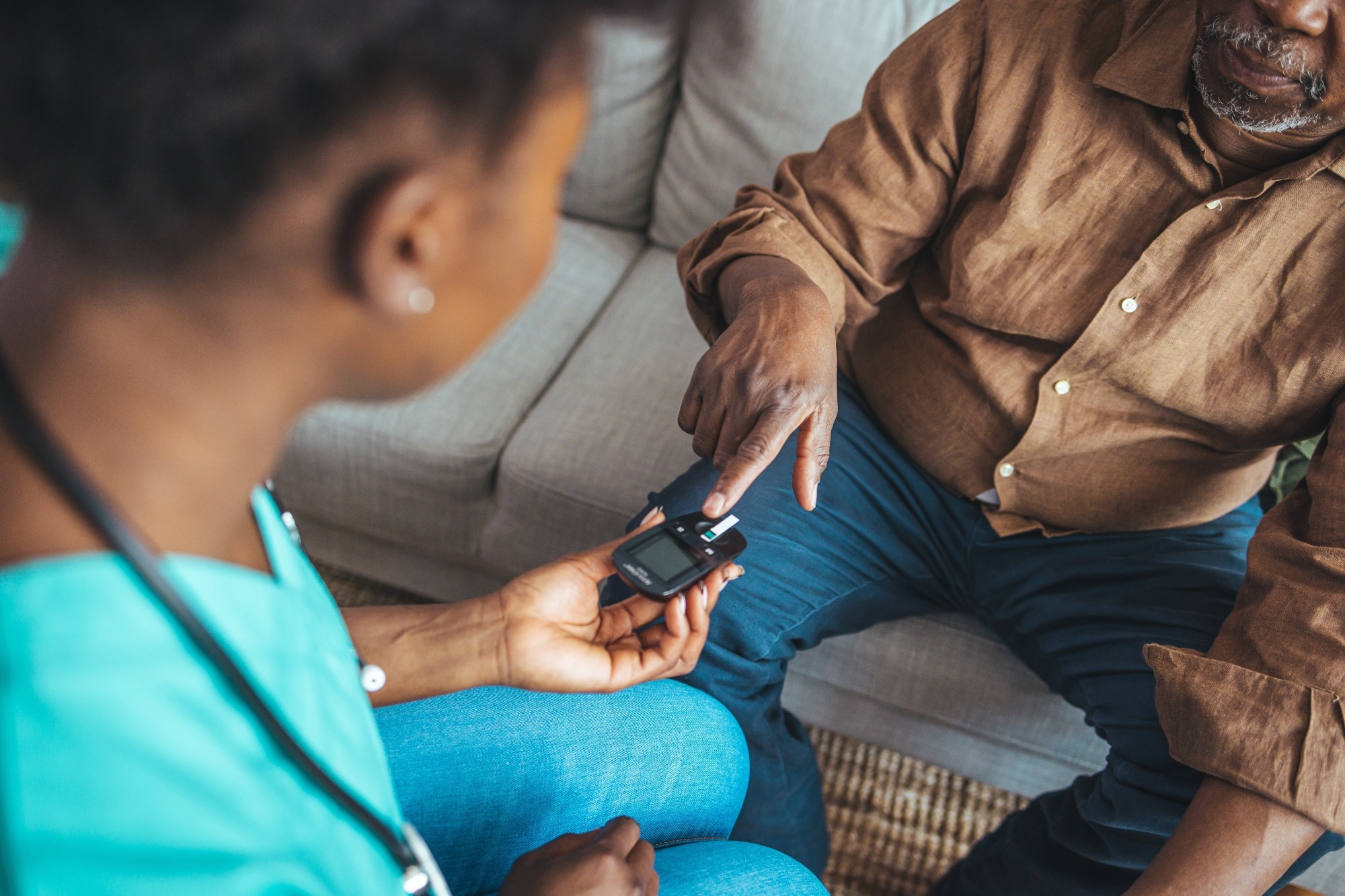The combination therapy further induced significant positive changes in body mass index (BMI), blood pressure, total cholesterol, fasting plasmatic glucose low-density lipoprotein (LDL), and the albumin to creatinine ratio. Notably, the combination intervention was found to achieve 55% glycated hemoglobin near-normalization, making it a viable and preferable alternative to conventional dapagliflozin therapy in T2D remission.
 Study: Type 2 diabetes mellitus pharmacological remission with dapagliflozin plus oral semaglutide. Image Credit: Dragana Gordic / Shutterstock
Study: Type 2 diabetes mellitus pharmacological remission with dapagliflozin plus oral semaglutide. Image Credit: Dragana Gordic / Shutterstock
What is T2D, and how do we combat it?
Type 2 diabetes mellitus (T2D) is a chronic, non-transmissible condition characterized by the body’s inability to produce or utilize insulin typically, resulting in abnormal blood glucose concentrations. Symptoms of T2D include frequent thirst and urination, excessive hunger and fatigue, and, in extreme cases, blurred vision. Alarmingly, diabetes prevalence is rapidly growing, with research estimating a more than four-fold increase between 1980 (108 million patients) and 2014 (422 million).
T2D is influenced by numerous health behaviors, especially diet and physical activity. Unfortunately, due to the increased consumption of unhealthy diets (e.g., the Western diet) and a shift towards more sedentary lifestyles, the International Diabetes Federation (IDF) Diabetes Atlas (2021) reports that more than 10% of the world’s adult population suffer from T2D, with almost half unaware of the condition. Extensive research in the past 15 years has resulted in the discovery of novel drugs for controlling T2D, most notably the Glucagon-like peptide-1 receptor agonists (GLP-1RA) and the sodium-glucose cotransporter-2 inhibitors (SGLT2i).
Dapagliflozin, a selective inhibitor of the SGLT2i class, and semaglutide, a GLP-1RA class drug, have independently been shown to effectively control T2D via oral administration. However, while the synergistic effects of combining SGLT2i and GLP-1RA drugs have been hypothesized and demonstrated in laboratory settings, the real-world benefits of combination therapy remain unknown. Investigating these benefits may allow for novel therapeutic interventions that perform better or utilize lower dosages than conventional clinical modalities.
About the study
In the present study, researchers aimed to evaluate the efficacy of dapagliflozin combined with oral semaglutide in aiding glycemic control in T2D patients. They compared this intervention against dapagliflozin taken alone.
The study cohort was derived from the PRECARE2 study, an observational, real-world study aimed at evaluating the efficacies of clinical therapeutics on T2D patients. Data for this study was obtained from 11 centers in Lombardia, Italy, and comprised demographic and clinical patient histories. Study inclusion criteria included age (>18 years), clinical diabetes diagnosis (at least three months), and current interventions (dapagliflozin [dapa] or dapagliflozin along with oral semaglutide [dapa+sema]). A total of 1,335 individuals met the inclusion criteria and were enrolled in the present study.
Study interventions comprised the dapa (control) cohort (443) and the dapa+sema (case) cohort (892). Outcomes were measured via follow-up at 3- and 6-months following treatment initiation. Outcomes of interest included weight, body mass index (BMI), estimated glomerular filtration rate, blood pressure, fasting blood sugar, glycated hemoglobin (HbA1c), high-density lipoprotein (HDL), low-density lipoprotein (LDL), and the urinary albumin to creatinine ratio (ACR).
Study findings
At six months following intervention initiation, the dapa+sema cohort presented a mean reduction of 1.2% in baseline HbA1c levels, significantly outperforming dapa alone (-0.5%). The combination therapy was observed to result in improved renal and cardiovascular benefits across serum creatinine, BMI, weight, fasting plasmatic glucose, and LDL metrics. HDL increased slightly in both case and control cohorts, though these findings are statistically insignificant. Interestingly, the control (dapa) group was observed to show reductions in triglycerides, which was absent in the case (dapa+sema) group.
A logistical binary regression identified serum HbA1c levels and kidney function as the metrics most strongly corresponding to adverse T2D outcomes, as assessed via the Kidney Disease Improving Global Outcomes (KDIGO) classification system. Since the combination therapy resulted in the most remarkable improvements in both metrics and corresponding KDIGO risk classification, the combination of dapagliflozin and oral semaglutide shows promise as a future clinical intervention in T2D pharmacological remission.
Conclusions
The present study assessed the efficacy of dapagliflozin combined with oral semaglutide versus dapagliflozin alone in a cohort of 1,335 Italians. Findings revealed that the combination therapy improved almost all measured outcomes except for HDL and triglyceride levels when compared to dapagliflozin treatments. Notably, the combination therapy was found to decrease baseline HbA1c levels by 1.2% compared to dapagliflozin (0.5%), resulting in significantly improved KDIGO risk assessments.
“Even if further research is needed, we suggest that the combination regimen of dapagliflozin plus oral semaglutide may induce type 2 diabetes pharmacological remission in clinical practice in more than 50% of patients.”
Journal reference:
- Lunati, M. E., Cimino, V., Bernasconi, D., Gandolfi, A., Morpurgo, P. S., Tinari, C., Lazzaroni, E., Baruffaldi, L., Muratori, M., Montefusco, L., Pastore, I., Rossi, A., Franzetti, I. G., Muratori, F., Manfrini, R., Disoteo, O. E., Terranova, R., Desenzani, P., Girelli, A., . . . Fiorina, P. (2023). Type 2 diabetes mellitus pharmacological remission with dapagliflozin plus oral semaglutide. Pharmacological Research, 199, 107040, DOI – https://doi.org/10.1016/j.phrs.2023.107040, https://www.sciencedirect.com/science/article/pii/S1043661823003961